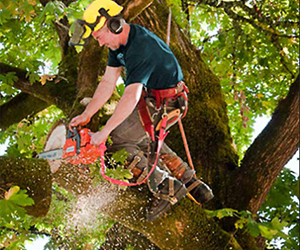Fallen logs of white tidy and shuddering aspen at different phases of disintegration were inspected from undisturbed and 1, 14, and 28-year-old post-fire and post-reap locales in northern Alberta, and read for contrasts in the related microfungus networks Lumley et al. 2001. Wood tests were plated straightforwardly onto every one of 6 distinctive media and from these contagious species were distinguished and specified over a two-year time frame. Around 10 000 segregates were obtained, addressing 292 types of filamentous microfungi, including 41 ascomycetes, 29 zygomycetes, and 222 diasporic growths. The most regularly confined species were Tree Surgeons Essex , Rhinocladiella atrovirens, Penicillium spinophilin, and Mortierella ramanniana.
Group examination and appointment of microfungus networks in logs showed that the three types of the log had the best impact on the specific organization of networks. Organism people group structure was likewise related with the phase of disintegration. Species lavishness was most elevated in logs from undisturbed locales and least in logs from the most as of late upset destinations. Species variety Shannon-Weaver was just marginally higher at undisturbed locales than at upset destinations. The main natural factor was log dampness, which expanded proportionately with the phase of decay and was altogether related to climatic variables.

Wounds and injuries among trees :
Wounds delivered on leftover trees during halfway cutting regularly give entryways to rot parasites. Influenced trees are inclined to blow down and breakage at the injury site, and regardless of whether they get by to pivot age their worth is decreased by finishing and rot in the wood.
- Wounds
The wound’s impact of temperature on microbial variety in injuries in white and dark tidies was examined by Dumas and McLaughlin 2003. Tests were taken from trees injured during manual or feller-buncher fractional cutting and sliding activities in the Black Sturgeon Forest, 120 km upper east of Thunder Bay, Ontario. The examples were taken from 76 trees toward the beginning of October when the mean airborne temperature surpassed 0 °C and 23 trees in late October/early November when the mean flying temperature was under 0 °C, to fill in as the pre-freeze-up and post-freeze-up gatherings, separately.
- Injuries
The injuries were inspected and refined. The number and proportion of microbes, actinomycetes, and organisms on one-week-old injuries shifted among pre-and post-freeze-up injuries, wound areas, and media. In any case, arbitrary examples of the various classes of organisms secluded from the 2 tidy species didn’t contrast essentially, demonstrating any connection between tree species and microorganisms. Wounds were more normal on stems than on roots or butts. Wounds on roots found the middle value of 2 and multiple times the space of those on stems and butts, separately. A bigger number of microscopic organisms than growths were separated from the pre-freeze-up injuries than from the post-freeze-up injuries, while parasites were more abundant than microbes on the post-freeze-up injuries.
Hazard appraisal:
Assessing the threat a tree presents, regardless of whether by its condition of wellbeing or by its circumstance, to individuals or potentially property is called Tree Risk Assessment. Methods have arisen dependent on Matheny and Clark’s network of three elements which add to the level of hazard specifically, disappointment potential, size of the inadequate part, and target rating how regularly a person or thing is available to be hurt or harmed. Therefore, a Quantified Tree Risk Assessment “QTRA” framework has been created by others that ascertain the danger mathematically regarding cost ramifications of tree harm and distributed cultural standards of satisfactory, passable, and unsuitable danger. The International Society of Arboriculture refreshed its methodology in 2012 with a subjective words based lattice known as Qualitative Tree Risk Assessment “TRAQ”
To follow the tree proprietor’s legitimate obligation of care to occupiers, guests, passers-by or neighbors, where standard perception or checking of the tree’s condition is unimaginable, tree reviews ought to be completed at fitting stretches by an equipped individual and their danger decrease suggestions ought to be carried out.

